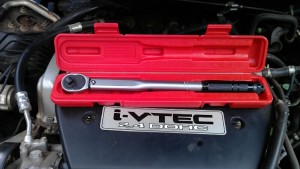Prevent your Wheel Studs from Breaking
I have observed a good number of cars on Nigerian roads with broken wheel studs. In this post we will look at the steps you can take to lessen the chances of this happening on your vehicle. Some causes are very preventable. I was quite shocked when I saw the car with the wheel above parked, just couldn’t believe someone whose car had 5 wheel studs could drive a vehicle with just 2 lug nuts screwed on! This is an accident waiting to happen!
I’m sure if the car could talk, it would have been saying to the owner…“Alert Alert…Wheel separation imminent, replacement of wheel studs & lug nuts advised”. I would have spoken to the owner had I seen him/her for the time I stood around the vehicle, a 2008 Toyota Camry I think. Depending on your maintenance culture, its quite possible that as you read this one of your wheels is missing a lug nut (wheel nut) because a wheel stud is broken.
Whilst there are a number of things that can lead to breakage of wheel studs, we would cover a few key preventable ones. These are considered below:
1. Under or over-torquing of lug nuts: Lug nuts have a specified torque(Torque is the measure of rotational force applied on something in this case lug nuts). When the adequate amount of torque is applied equally on all wheel lug nuts, it creates a frictional force that prevents movement between the surface of the wheel rim that mates with the centre portion of the brake rotor or drum. This frictional force is called clamp force. When lug nuts are under-torqued, they simply loosen and may fall off or stay on but the gap created will damage the stud threads possibly ending in a fracture due to metal fatigue. Over-torquing on the other hand would stretch the wheel stud beyond its elastic limit leading to weakening and eventual breakage. A torque wrench is recommended for applying the correct amount of torque on lug nuts e.g. the torque for lug nuts on a 2003 Honda Accord LX is 80ft/lbs. Torque wrenches are calibrated to give clicks (or some other alert) when a set torque is reached. So you set the torque you want to apply on a bolt and then tighten, when you get to the torque it gives an audible click. Simple. Since I started using a torque wrench for installing tires, I noticed I could still tighten the lug nut if I continued manually after reaching the recommended 80ft/lbs on my Accord. If you do not own a torque wrench, beware if you have an Arnold Schwarzenegger macho man doing your tire change!
2. Reduction in clamp force: This can be caused by a number of things such as rust or dirt. When mounting tires, its recommended that you use a wire brush to remove any rust or dirt present on the mating surfaces of the wheel rim and the brake rotor or brake drum. If this is not done, the corrosion or dirt that is tightened down will degrade over time leading to a soft joint according to crashforensics.com. This will permit movement between the rim and rotor, and if prolonged with cause fracture of the wheel stud.
3. Not Re-torquing after driving some miles: Most wheel fitting shops recommend re-torquing your lug nuts after driving some distance. The reason for this is related to a possible reduction in clamp force due to expansion or contraction of metals as a result of temperature. This is said to affect alloy rims more. The recommended distance to go before re-torquing varies by source but I work with 50miles (80km).
Have a question or a contribution? you can leave a comment or hit like or share if you loved it. Many thanks!


